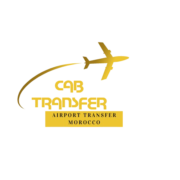Price Transfer Morocco

Morocco
The traditional domain of indigenous peoples now collectively known as Berbers (self-name Imazighen; singular, Amazigh), Morocco has been subject to extensive migration and has long been the location of urban communities that were originally settled by peoples from outside the region. Controlled by Carthage from an early date, the region was later the westernmost province of the Roman Empire. Following the Arab conquest of the late 7th century ce, the broader area of North Africa came to be known as the Maghrib (Arabic: “the West”), and the majority of its people accepted Islam. Subsequent Moroccan kingdoms enjoyed political influence that extended beyond the coastal regions, and in the 11th century the first native Amazigh dynasty of North Africa, the Almoravids, gained control of an empire stretching from Andalusian (southern) Spain to parts of sub-Saharan Africa. Attempts by Europeans to establish permanent footholds in Morocco beginning in the late 15th century were largely repulsed, but the country later became the subject of Great Power politics in the 19th century. Morocco was made a French protectorate in 1912 but regained independence in 1956. Today it is the only monarchy in North Africa. Most of Morocco lies at high elevations, averaging about 2,600 feet (800 metres) above sea level. Two chains of mountains divide eastern from Atlantic Morocco: the Rif Mountains in the north form a buffer along the Mediterranean coastline, whereas the Atlas Mountains create a barrier across the centre. The two parts of the country are connected by the narrow Taza Gap in the northeast as well as by roads that follow older traditional routes. The Atlas and Rif ranges were formed during the Paleogene and Neogene periods (between about 65 to 2.6 million years ago) by the folding and uplifting of sediment that had accumulated in the Tethys Sea, which, at that time, bordered the northern coast of Africa.






